When I describe SEO, I explain that it is a mix of marketing, technical know-how, and psychology.
From a marketing perspective, you must have an overall understanding of your product, the problems it solves, and how to best communicate to your audience.
From a technical perspective, you must be able to create a foundation for your website that improves search performance.
Now, from a psychological perspective… that is where an SEO can really make a difference.
If you can learn how to not only identify your ideal website visitor but also determine who they are and what motivates them, your SEO work will really pay off. You’ll have the traffic numbers and also the ROI to support your efforts.
SEO isn’t just about the numbers (i.e., keyword ranking positions, number of backlinks, traffic, etc.). It is also about understanding the audience and building an SEO campaign around that information.
When SEO is centered around the right audience, targeted traffic increases, which leads to more conversions.
There are several methods that will help you research and analyze your audience for SEO.
As you will see in the list below, there are tools weaved throughout each method to make things easier along the way.
1. Use Keywords To Gather Demographics Data
Keyword research is one of the core tasks of SEO. Keywords should be targeted and relevant to your products or services, which is something you likely already know.
Once you have a solid list of keywords, select the top five that represent your brand the best and find out the demographics associated with those words and phrases.
Google Trends will provide you with demographic information tied to the location and will show you how the keyword has trended over time.
Google Trends really came in handy during the pandemic when people’s online behaviors were quickly shifting.
One of my clients publishes recipes, and the question came up regarding the types of recipes people were searching for when they were stuck at home.
It was banana bread.
Apparently, comfort food was the focus when we couldn’t leave our homes. You can see in the screenshot below how the trend for “banana bread” skyrocketed.
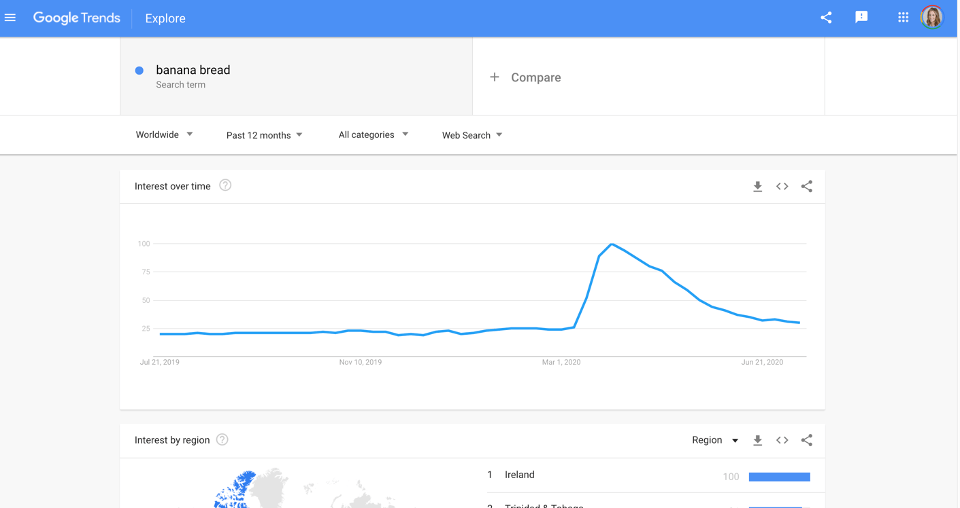 Screenshot from Google Trends, June 2022
Screenshot from Google Trends, June 2022But, what about the demographic data?
Google Trends provides great data on the location, but there is also another tool I like to use for further demographic information, Demographics.io. This tool ties demographic data to keywords.
Using the same banana bread example, below is the data of people who were searching this keyword.
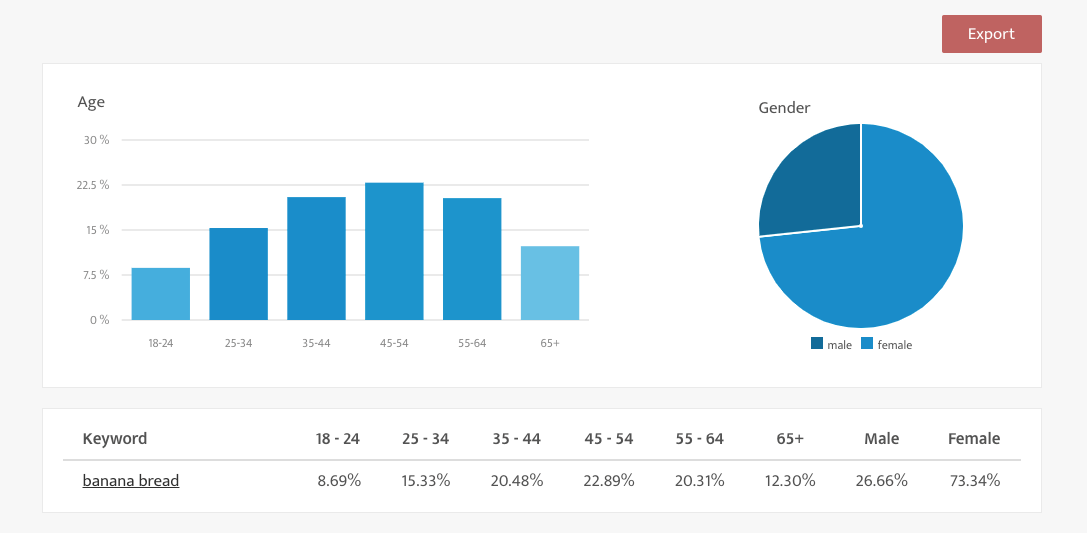 Screenshot from Demographics.io, June 2022
Screenshot from Demographics.io, June 2022Tip: How To Apply This Information
Identifying demographic information, including age, gender, and location can help you in SEO in many ways.
You can look for local link opportunities in the geographic areas where queries occur.
In terms of age and gender, you can determine topics, interests, and other terminology that is relevant to those groups.
2. Identify Who Is Visiting Your Website
This method is kind of like painting the target around the arrow.
However, it is important to understand who is coming to your website and then you can determine if that is the correct audience.
One of the easiest ways to get this information is from Google Analytics.
Under the Audience section, you are able to view a range of audience information, including age, gender, location, and interests, as shown below:
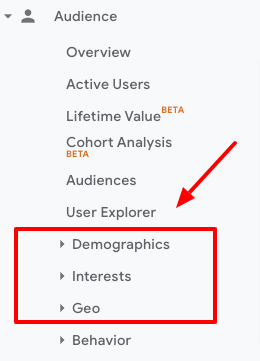 Screenshot from Google Analytics, June 2022
Screenshot from Google Analytics, June 2022Tip: How To Apply This Information
This data can give insight into the audience and will help you as you recommend content topics and target geographic areas.
On the other hand, you might look at this information and realize that it does not align with your organization’s target markets.
In that case, you need to take a close look at your keywords and content to make sure there is no misalignment.
3. Analyze Other Brands
To gather information about your target audience, you can look beyond your own website and analyze other brands and competitors.
You would be looking for demographics and psychographics – basically, you want to collect as many insights as possible. The following tools can help you with this type of analysis.
Quantcast
Quantcast pulls together insights on purchase behaviors, occupations, device usage, demographics, domain affinity, and more. The example below is an analysis of Goodreads.com.
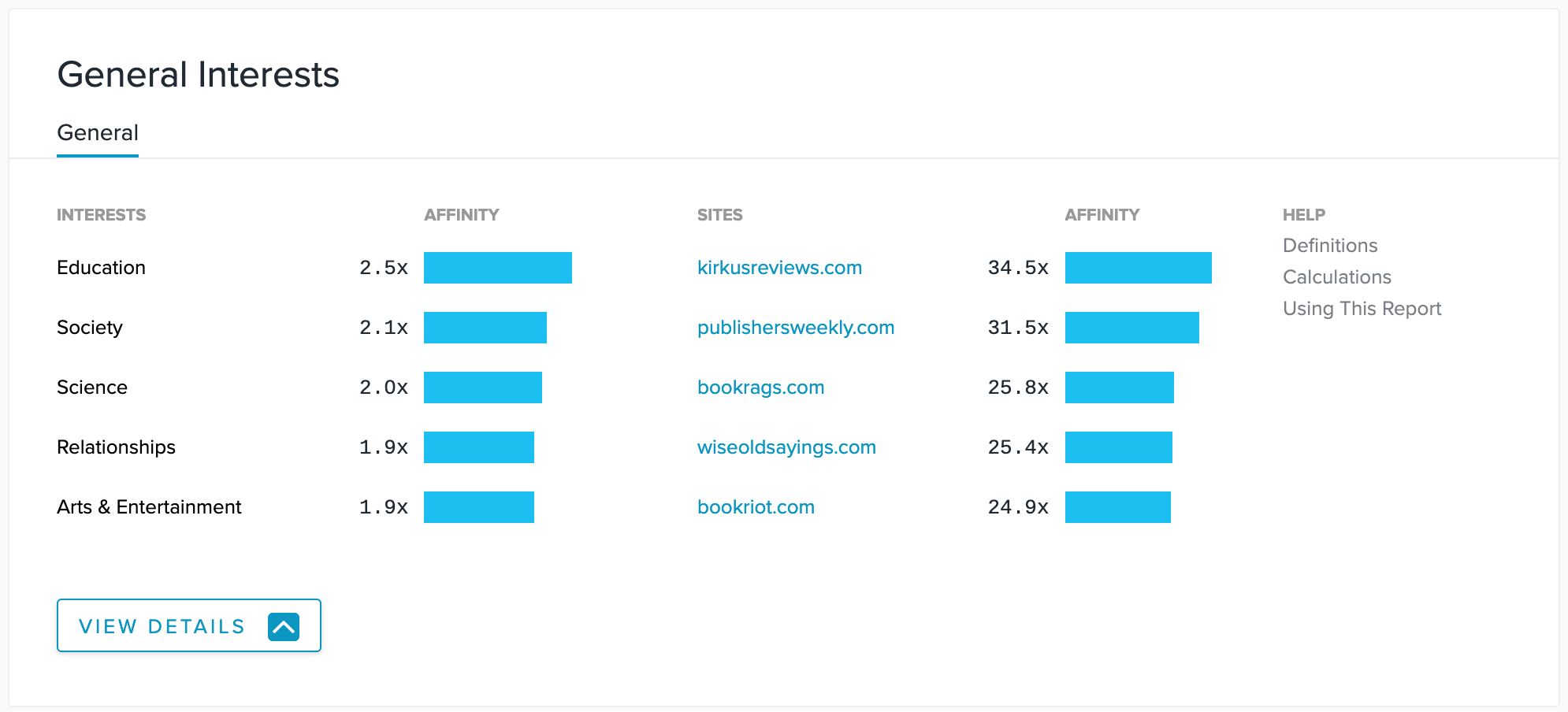 Screenshot from Quantcast, June 2022
Screenshot from Quantcast, June 2022
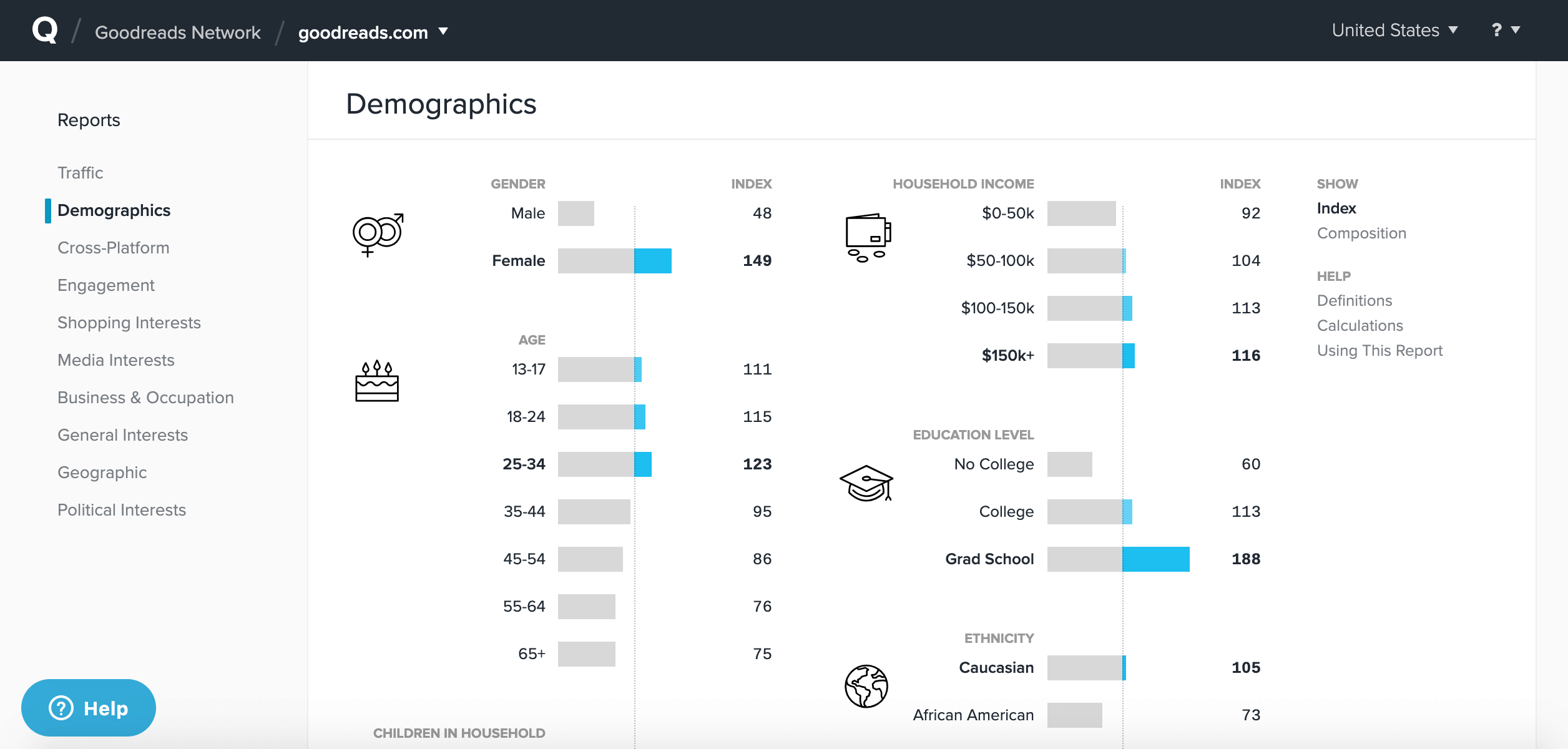 Screenshot from Quantcast, June 2022
Screenshot from Quantcast, June 2022Audiense
Note: I love this tool and use it often.
According to Audiense.com, they build the audience using eight different criteria, “which can be combined together allowing the creation of highly targeted audiences: Demography, Relationships, Behavior (activity), Conversations, IBM Watson Personality Insights, Location, Interests, and Twitter profile.”
Audiense then creates audience segments by “clustering individuals based on ‘who knows who’ i.e., how these individuals are interconnected. We take into account who follows who and cluster them together – for instance, if person A follows person B then they’ll be clustered together.”
The first screen of the report provides a snapshot of the audience data, as shown below.
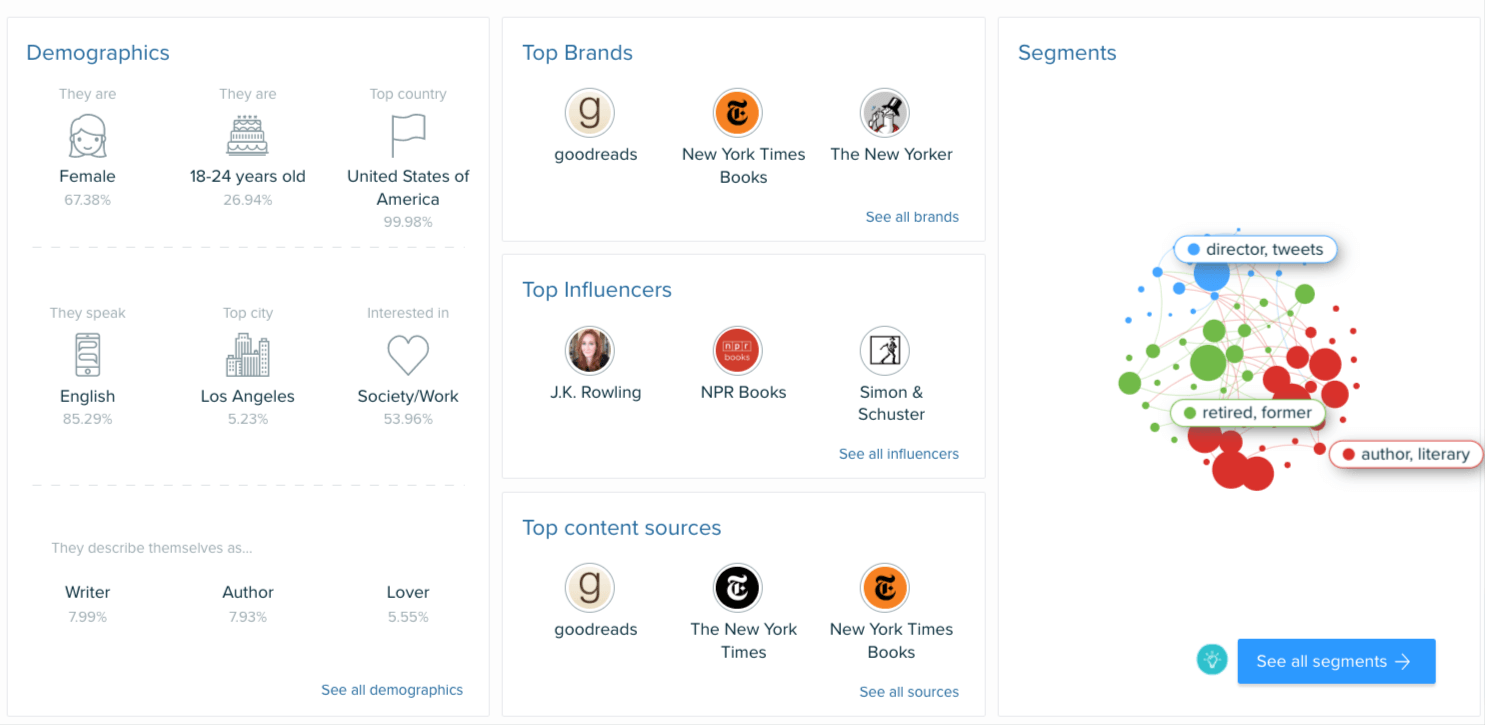 Screenshot from Audiense, June 2022
Screenshot from Audiense, June 2022What is so great about this tool is that you can drill down even more. Just check out the breakdown of information available (see the red box on the screenshot).
 Screenshot from Audiense, June 2022
Screenshot from Audiense, June 2022Tip: How To Apply This Information
Similar to the last method, this data can give insight into the audience and will help you as you recommend content topics and target geographic areas.
You might also find some great link building ideas based on your interests.
4. Use Social Insights
Social platforms are one of the quickest ways to get information about an audience.
You can view follower/fan information directly on your company’s Facebook page, as shown below:
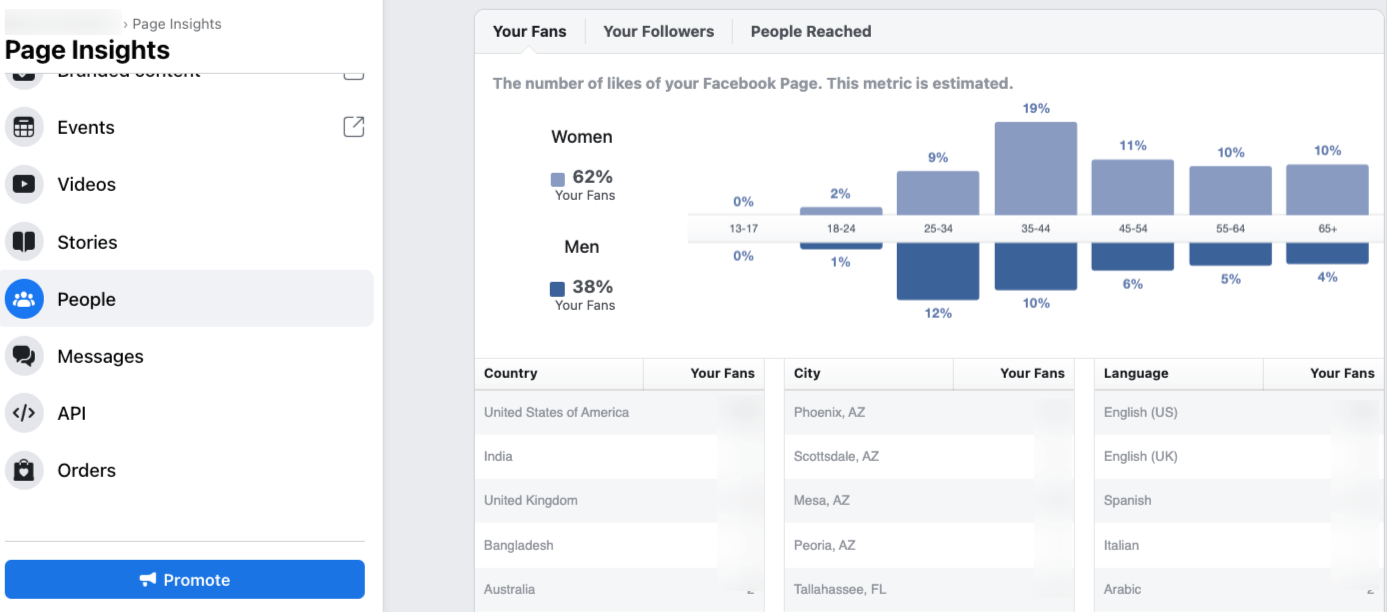 Screenshot from Facebook, June 2022
Screenshot from Facebook, June 2022You can also view competitors’ and other brands’ audience information on Followerwonk.
What’s great about this tool is it also provides you with a word cloud to show you what users are talking about:
 Screenshot from Followerwonk, June 2022
Screenshot from Followerwonk, June 2022Tip: How To Apply This Information
Specifically, the word cloud in Followerwonk can help you identify other keywords you might have missed and can also present content marketing ideas.
5. Send Out Surveys
This method is the most straightforward out of all of them on this list. If you want to understand your audience better, send out a survey.
To get a decent number of surveys returned, keep it short and sweet. Ask questions about basic demographics, overall interests, pain points, and needs.
Here is a great resource on how to create your survey: How To Create & Use Surveys For Content Marketing.
Tip: How To Apply This Information
Use the information you gather in the survey to identify content opportunities, including images and videos, keyword targets, etc.
6. Identify Questions
With Google increasingly showing answers directly in SERPs, identifying common user questions has become that much more important.
Plus, we want to anticipate the long-tail queries of our potential audience, so we can get in front of them at the right time. There are many tools that provide common questions, including:
These tools pull from various data sources, so it is worthwhile to check out them all. Below is an example from AnswerThePublic.
 Screenshot from AnswerThePublic, June 2022
Screenshot from AnswerThePublic, June 2022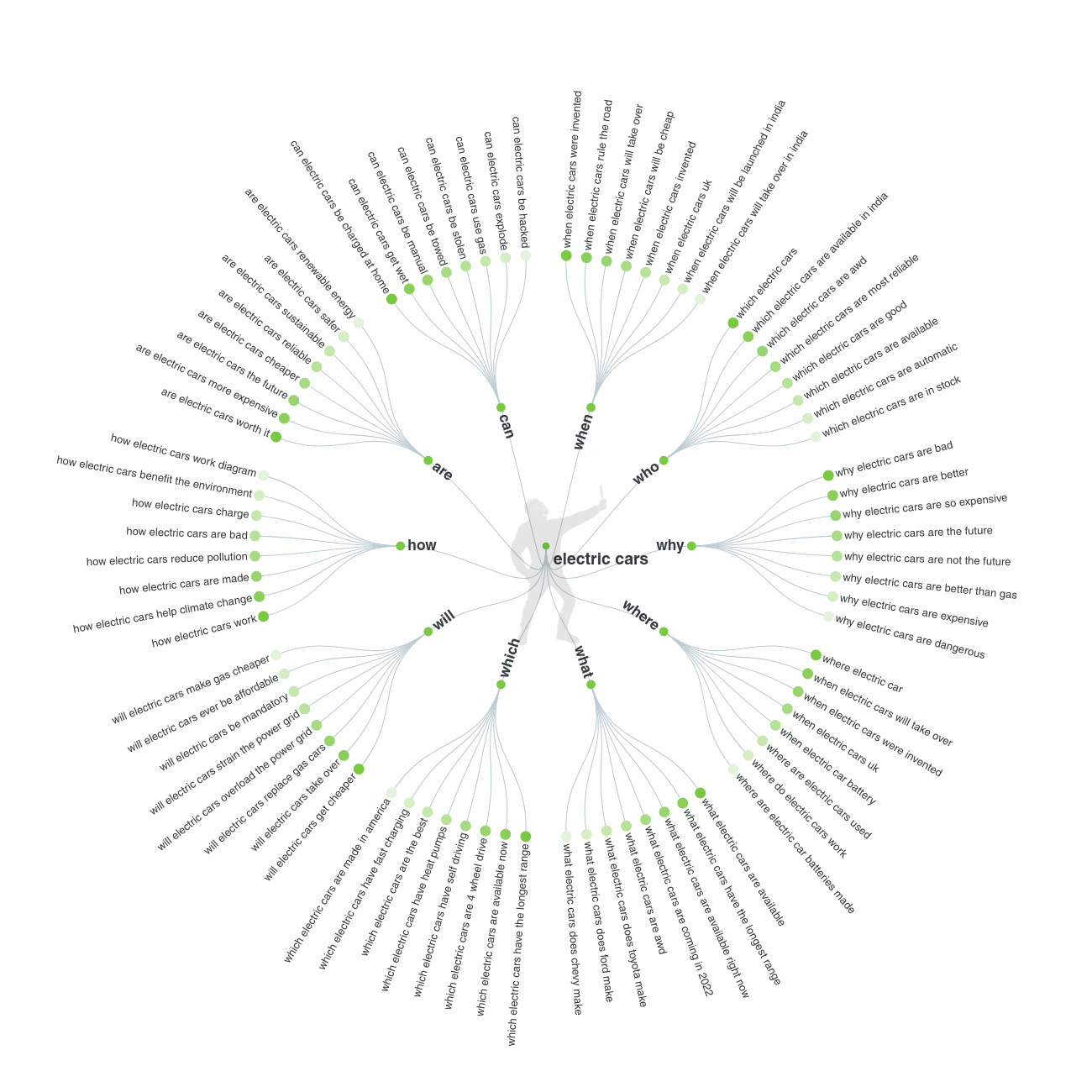 Screenshot from AnswerThePublic, June 2022
Screenshot from AnswerThePublic, June 2022Tip: How To Apply This Information
Create content around common questions to attract long-tail searches among your audience and to increase your odds of showing up as a direct answer in Google SERPs.
7. Research Secondary Data
Once you know age/interests/etc. of your audience, you can fill in the blanks through further research. Look for studies regarding one of the key aspects of your audience.
For example, if you determine that your audience is in the Baby Boomer generation, head to Google Scholar and look for published research on this group.
Tip: How To Apply This Information
Use this additional research to sketch your personas and get a better view of who it is you are trying to target via SEO.
Final Thoughts
It might seem like a lot of extra work to dive into your audience before getting into SEO tasks. However, it is well worth the time.
You will be able to drive better traffic to your website and improve your ROI on SEO.
More Resources:
Featured Image: fizkes/Shutterstock
